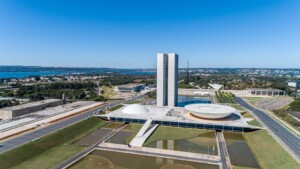Last month, images of resigned tourists boarding yachts to escape the forest fires raging across southern Turkey hit the front pages of newspapers around the world and social media news feeds. The attempt to provide a hedonistic Mediterranean utopia to middle-class workers traveling from more septentrional latitudes metamorphosed into a sort of ancient Greek drama. The Intergovernmental Panel on Climate Change quickly linked the fires to global warming—recent temperatures in the region have been the warmest of the past 50 years. The most fervent critics of the neoliberal turn that has characterized Turkish politics since the 1980s blamed the pressure urbanization has put on natural resources, as well as the rampant privatization of public land. Laws inherited from the Ottoman Empire and the emigration of minority populations during the Turkish War of Independence (1919–1923) provided the newborn republic with ownership of almost two-thirds of Turkey’s land.
According to the Center for Spatial Justice (Mekanda Adalet Dernegi, or MAD) and the collective data-compiling and mapping project Mülksüzlestirme, the depletion of state assets has not only been tarnished with corruption scandals but also dispossessed the public of a powerful tool to fight ecological challenges and provide affordable housing. At the same time, there has been no shortage of rumors and fake news accusing Kurdish separatists and other “enemies of the people” of starting the fires. Not for nothing did the eastern Aegean coast witness the first arsonist in recorded history. The Greek geographer Strabo (c. 63 BCE–c. 24 CE) explains how in the Fourth century BCE, lowborn Herostratus set fire to the Temple of Artemis at Ephesus, one of the Seven Wonders of the World, for the sole reason of becoming famous.
The ancient civilizations of Asia Minor have contributed as much or more to Western culture as their neighbors in the southern Balkans. Fifth-century BCE king Croesus of Lydia is credited with instituting the first standardized monetary system. Its golden mines gave birth to the myths of the Golden Fleece and King Midas. The river Maeander, “which, taking its rise from its own fountain, seems to run back to its own head,” became synonymous with anything exceedingly winding. The Fourth-century BCE tomb of the Persian satrap Mausolus in Halicarnassus, in present-day Bodrum (another of the Seven Wonders), gave rise to the word mausoleum. But, as they say, the winners write history. The Argives conquered Troy and their progeny wrote about it, giving the Greeks an edge that has established them as the fountainhead of Western civilization.
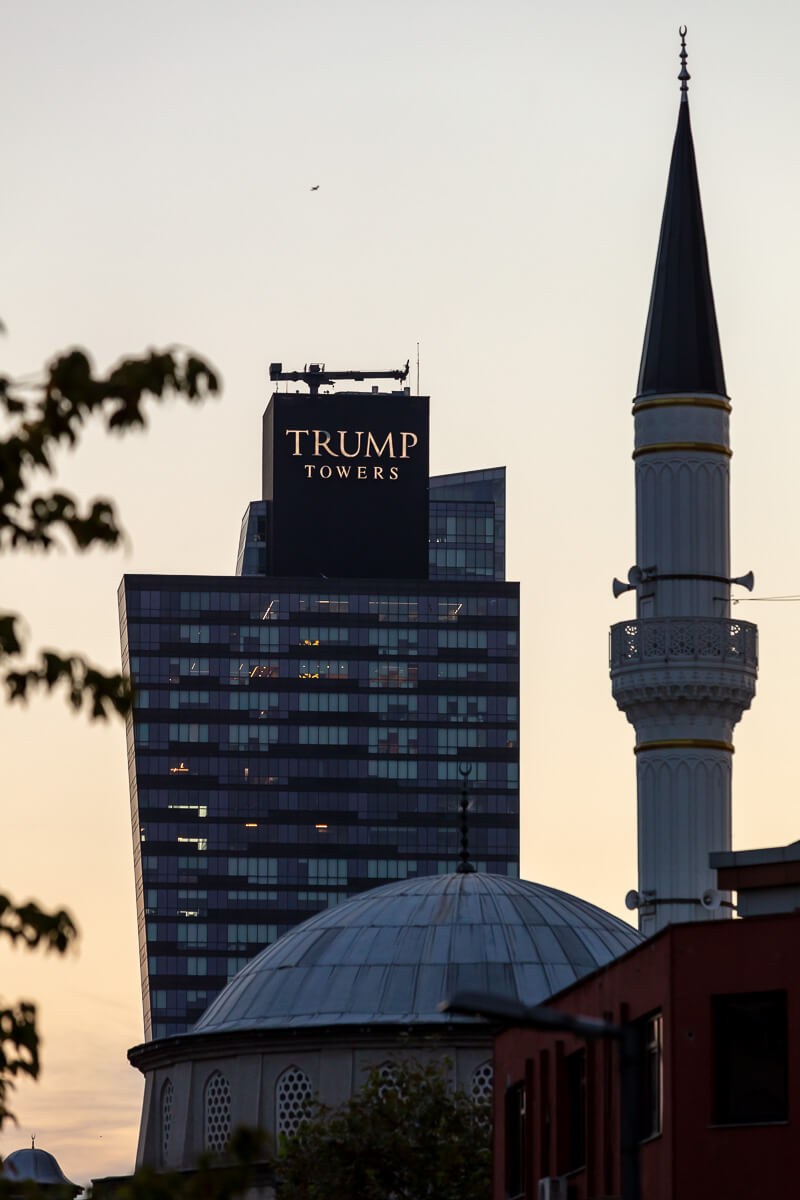
First to amend this misconception was German self-instructed archaeologist Heinrich Schliemann (1822–1890), who decided it made more sense to read Homer than 19th-century scholarship. Following his instinct, he discovered the site of Troy near Hissarlik, which led to the reassessment of the Iliad and other ancient texts as historical sources. While his excavation techniques, which included the use of dynamite, would today be considered barbaric, visitors’ experience of the site has been extremely improved by the recent construction of a museum. Completed in 2018 and designed by Yalin Mimarlik, it is a Corten steel–clad cube with crenelated edges, aiming to resemble both an “excavated artifact” and a fortress. The downward access ramp gives visitors the feeling of entering an archaeological excavation. It includes, in addition to the permanent collection of artifacts found in situ, storage, conservation and restoration labs, a cafe, and retail facilities.
Perpetuating historical misconceptions, 476 CE is still considered, in the West, as the date of the fall of the Roman Empire, even if its second, third, fourth, and fifth most important cities (Constantinople, Antioch, Ephesus, and Alexandria) continued to thrive under the same rule for centuries to come. Some scholars argue that the empire survived under the Ottoman sultans after Mehmed the Conqueror took the city of Constantinople in 1453 and claimed the title Kaiser-I Rûm, “Caesar of the Romans,” for himself and his descendants. The Roman Empire after the fall of Rome managed to build Hagia Sophia, the Sixth-century church dedicated to the wisdom of the emperor, the most technologically advanced structure ever built until Brunelleschi built the Florence cathedral dome almost a millennium later. Considered to be the first dome built atop pendentives, allowing for a spherical surface to sit upon a square space, the Byzantine structure was also the first building to be designed by geometers rather than builders, Isidore of Miletus and Anthemius of Tralles, predating without question the Italian Renaissance divorce between design and construction and hence the beginning of architecture as a liberal art. It was built initially as an imperial church, and its beauty not only saved it from demolition and substitution as a mosque but became the prototype for mosque building thereafter. If the palm-tree courtyard of the Prophet Muhammed was the inspiration for the early hypostyle mosques, such as those in Córdoba, Kairouan, and Samarra, the domed space surrounded by minarets is today synonymous with the Muslim temple around the Islamic world and beyond. Established as a museum by the secular Turkish Republic in 1935, it reopened as a mosque in 2020, which reignited the debate about President Recep Tayyip Erdogan’s commitment to secular values and caused a great wave of condemnation across the West. However, while the reversion to a mosque has deprived Istanbulites and tourists alike of the pleasure of viewing the Ninth-century mosaics (which replaced those destroyed during the Eighth to Ninth-century Byzantine iconoclast crises and are now covered by white drapes), the city has recovered an extraordinary interior public space. Without an entry fee, the monument is experienced in a completely different way from when it was a “secular museum.” The architectural, historical, and political significance of Hagia Sophia cannot be overstated. Its importance is simply unparalleled elsewhere in the world.
Nevertheless, if one monument within the borders of the modern Republic of Turkey surpasses the importance of Hagia Sophia, that is Göbekli Tepe. Dated around 9000 BCE, it is the world’s oldest known stone building, preceding by seven millennia the Step Pyramid of Djoser in Egypt. It consists of several circular enclosures surrounding twin carved stone pillars in the middle that reach up to seven meters (23 feet) in height. Several theories indicate its use as a cult temple, as no signs of habitation have been found nearby. Among the most revolutionary is that of English archaeologist Steven Mithen, who argues that the construction activities at Göbekli Tepe created the need for grain to feed workers, leading the way to the first domestication of plants. In other words, monumental architecture heralded agriculture, and not the other way around, challenging the whole hypothesis of the Neolithic revolution and the Tower of Babel story. Paradoxically, the adjacent interpretation center inaugurated in 2018 and designed by Kreatif Mimarlik shies away from the everlasting virtues of stone construction, as it is built with mud and wood. The result is a sustainable structure, requiring little air-conditioning in an area usually scorched by heat, that does not disturb the view commanding the surrounding landscape. However, the statement “We built Göbekli Tepe 6,000 years before Stonehenge” that appears in one of the films continuously played inside the visitors’ center raises some intriguing questions about whom “we” refers to.
What undoubtedly has been built with the taxes of present-day Turkish citizens is the nearby Atatürk Dam, one of the world’s largest, and Şanliurfa Tunnels, the biggest ever built for irrigation. Whereas the reservoir lake has inundated archaeological sites of extreme significance, such as Nevalı Çori, smaller than but contemporaneous to Göbekli Tepe, it provides an irrigation system that has doubled cotton production in the region. It also offers a diplomatic weapon against neighboring Syria and Iraq, which have suffered water shortages since the dam was filled in 1992. The impact is most visible in satellite imagery. The otherwise “geographically artificial” straight-line border between Turkey and Syria becomes starkly defined by the difference between irrigated land to the north and nonirrigated land to the south.
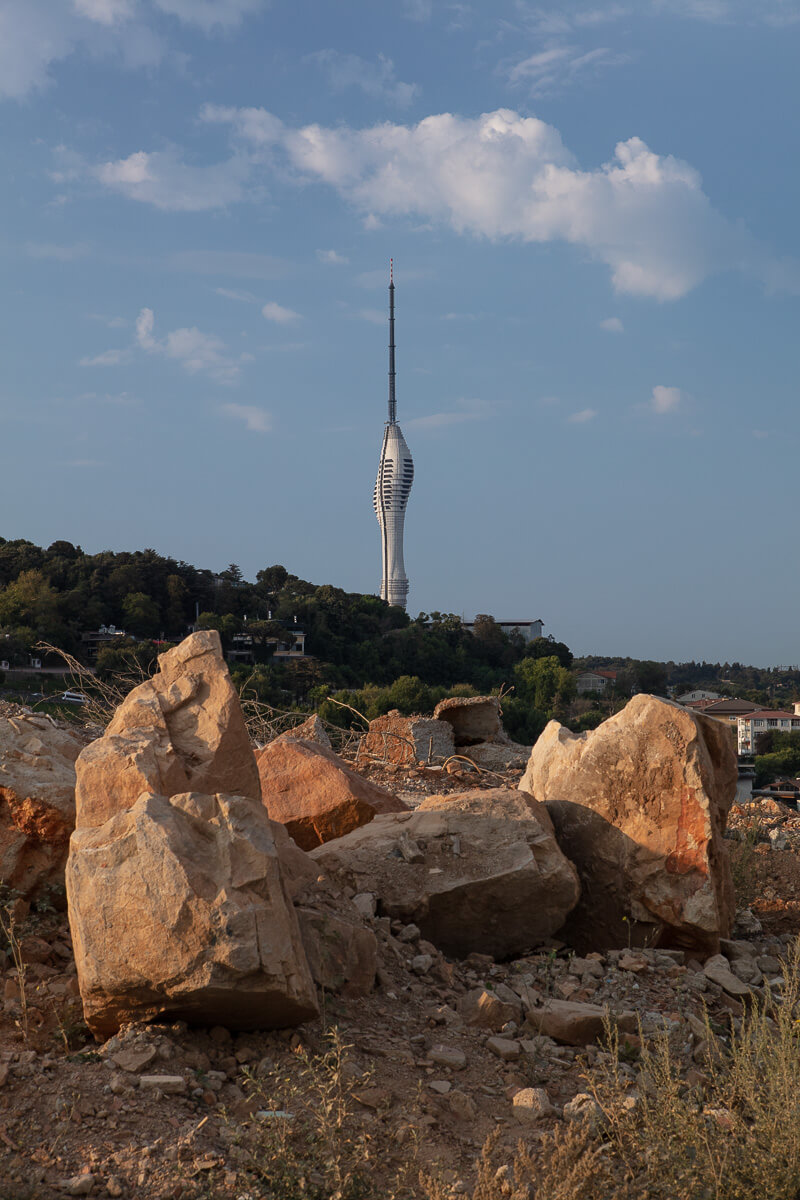
Turkish borders have also become a diplomatic weapon for the current administration. It is said that around five million Syrian refugees remain in Turkish territory, and many Afghan refugees attempting to reach Europe through Iran and Turkey are predicted to arrive in the coming weeks. While the local population was welcoming during the beginning of the Arab Spring, in the wake of the 2018–2021 currency and debt crisis, made worse by a pandemic that has dried up income from tourism, refugees are seen more and more as a menace to public stability. Meanwhile, Turkish incursions on Greek and Cretan maritime boundaries probing for hydrocarbons have provoked little if any response from the European Union, which fears Turkey loosening its grip on the refugees within its boundaries. Nonetheless, not all foreigners are regarded as poor migrants. Since Turkey is the only nation in the Middle East to grant citizenship to those who have been legal residents for a while or make a minimum fixed capital investment of $500,000, it has attracted well-to-do nationals from former regions of the Ottoman Empire and beyond.
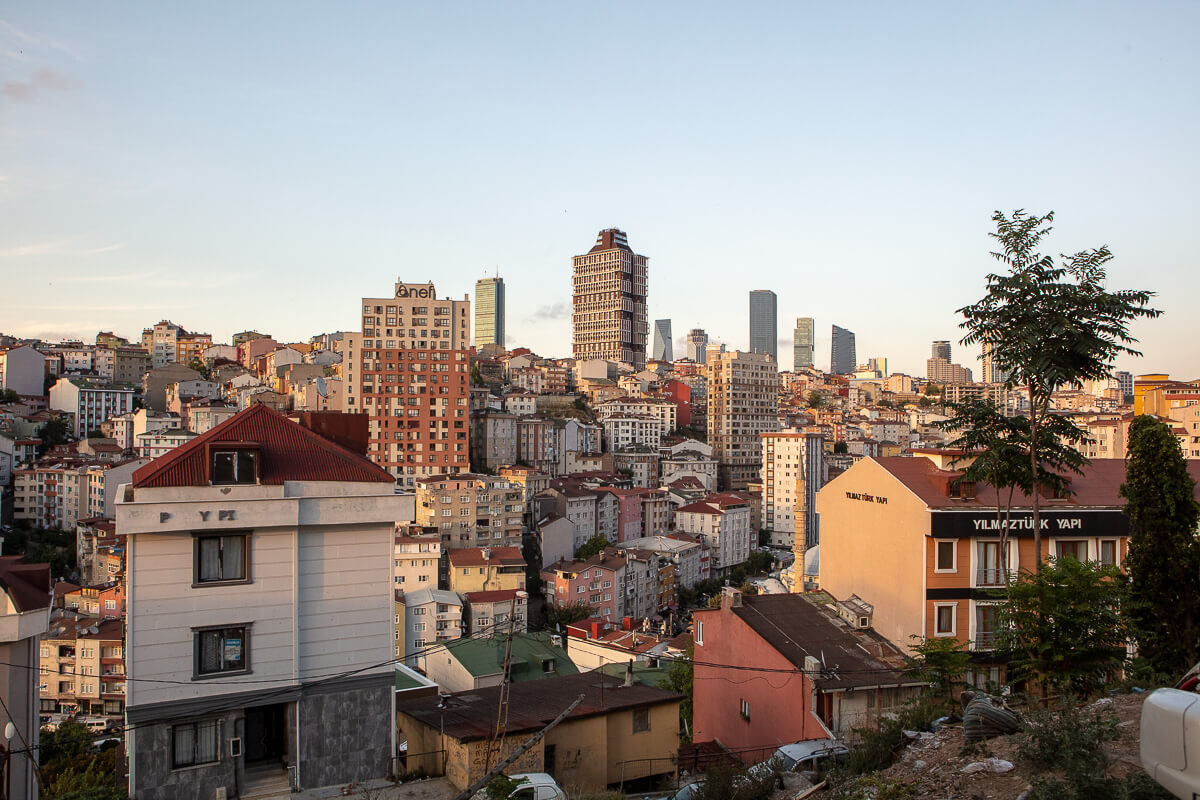
One of the recent real estate developments known for housing immigrants and other cosmopolitan expats is Istanbul’s new Trump Towers. Designed by Brigitte Weber, an Austrian-born architect practicing in Turkey, the towers sit between a high-traffic arterial road and Kuştepe, a former gecekondu (literally, landed-at-night) neighborhood inhabited by Roma communities originating from central Anatolia. While the public spaces seem livelier and better enjoyed there than inside the Trump Towers’ shopping mall, one can quickly ascertain the anxieties provoked by the sudden appearance of this transnational investment real estate. Whether we like it or not, it is known that most of the small-contractor apartment blocks that replaced the shantytowns of the gecekondu will collapse whenever the next great earthquake hits Istanbul. What will remain are these towers, emblazoned with the name of the former U.S. president who apparently allowed Turkey to attack U.S.-allied Kurdish militias in Syria in order to secure the $1 million to $5 million he receives in royalties from the project.
Whereas Trump failed to promote the neoclassical style for new federal buildings across the U.S., his counterpart in Turkey has succeeded in cladding Anatolia—and other territories such as Bosnia and Kosovo—with a gleaming mantle of neo-Ottoman mosques. The Çamlıca mosque, the largest one in Turkey, was designed by female architects Bahar Mızrak and Hayriye Gül Totu and is inspired by the designs of 16th-century Ottoman state architect Mimar Sinan, yet built with concrete and clad with white Anatolian marble and Iznik tiles. It houses a large underground parking lot and a child-care space and can hold up to 63,000 worshippers. Its proportions are dictated somewhat arbitrarily, with its minarets standing 107.1 meters high (351 feet) to celebrate the Turks’ victory against the Byzantine Empire in 1071 CE. Its 34-meter-high (111-foot) dome symbolizes the car-plate number of Istanbul, 34. But the building that probably better epitomizes the cultural schizophrenia that affects architecture over the fault line dividing Istanbul between its European and Asian continental plates is the nearby Küçük Çamlıca TV Radio Tower. Designed by female architect and former Zaha Hadid employee Melike Altınışık and inaugurated in 2021, with a total height of 369 meters (1,210 feet), it resembles “a tulip that has not bloomed yet.” While Turks claim to be the first to have domesticated the tulip—a wildflower native to Central Asia—whether its height has an esoteric numerical meaning or serves as a metaphor for the country has been left unsaid.
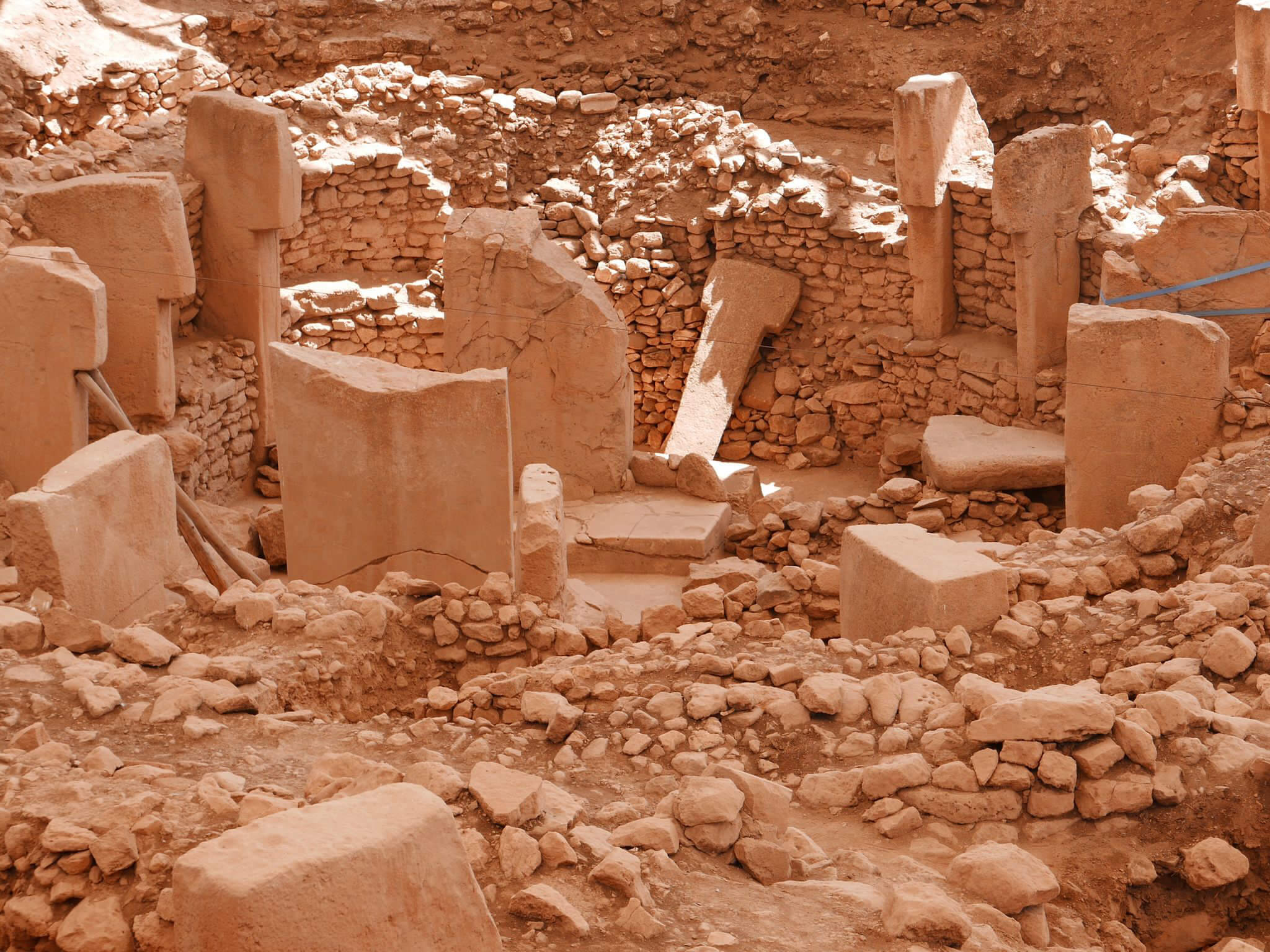
Bellerophon, “the greatest hero and slayer of monsters […] before the days of Herakles,” thought that killing the Lycian Chimera (near current-day Antalya) would grant him membership among the Olympian gods. Yet Zeus had him fall back in Cilicia (southern Anatolia), where he ended his days blind and in misery. Turkey applied to join the European Union in 1987. It historically belongs to the Mediterranean world and has been a NATO member since 1952, with the alliance’s second-largest army. But, tired of being brushed aside by its neighbors to the west, today the country is orienting itself elsewhere. With the decision to abandon the secular policies of his predecessors while maintaining a neoliberal and investment-friendly economy, Erdogan aspires to lead the Islamic world and legitimately become a counterweight to European predominance in the Mediterranean basin. By choosing the neo-Ottoman style for his mosque building program, inherited from the Eastern Roman imperial basilicas, rather than exploring the possibilities of early Islamic architecture, Erdogan has ensured that Turkish global ambitions are recorded in stone. Only time will tell if Atatürk’s republic suffers the same fate as Bellerophon or not. Fortunately, there are many other mythologies outside the West to choose from.
Ibai Rigby is an editor at urbanNext. He lives in transit.










